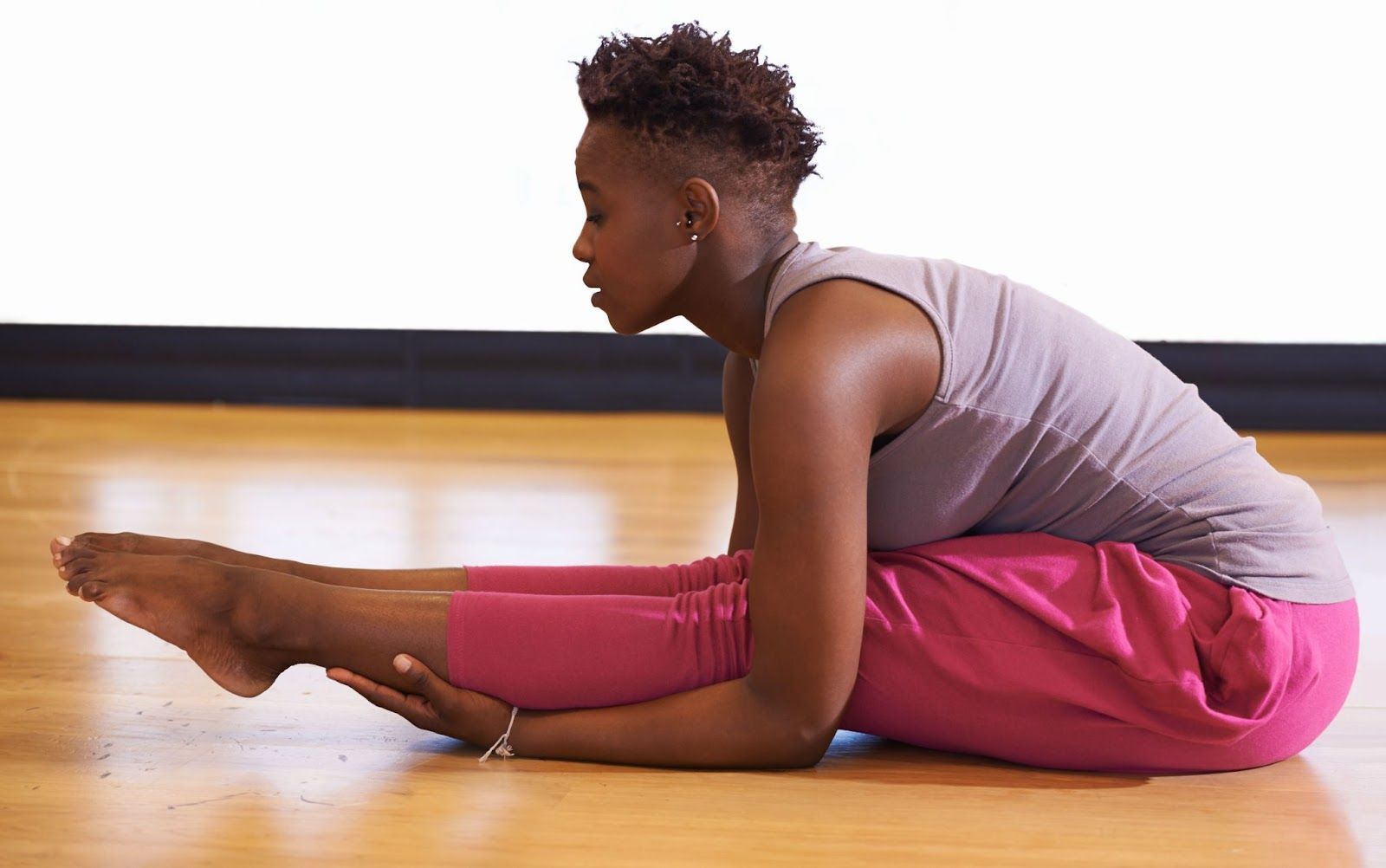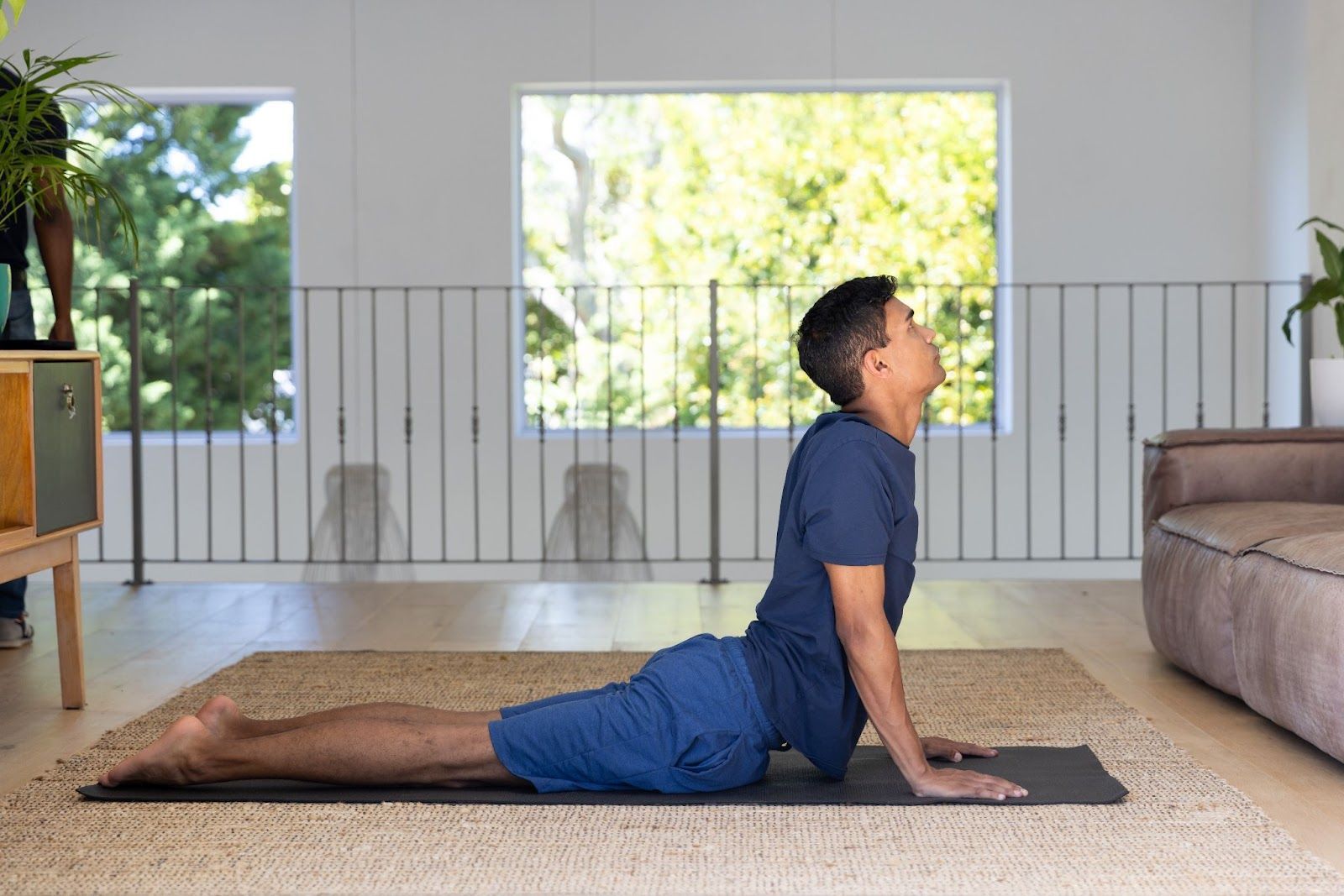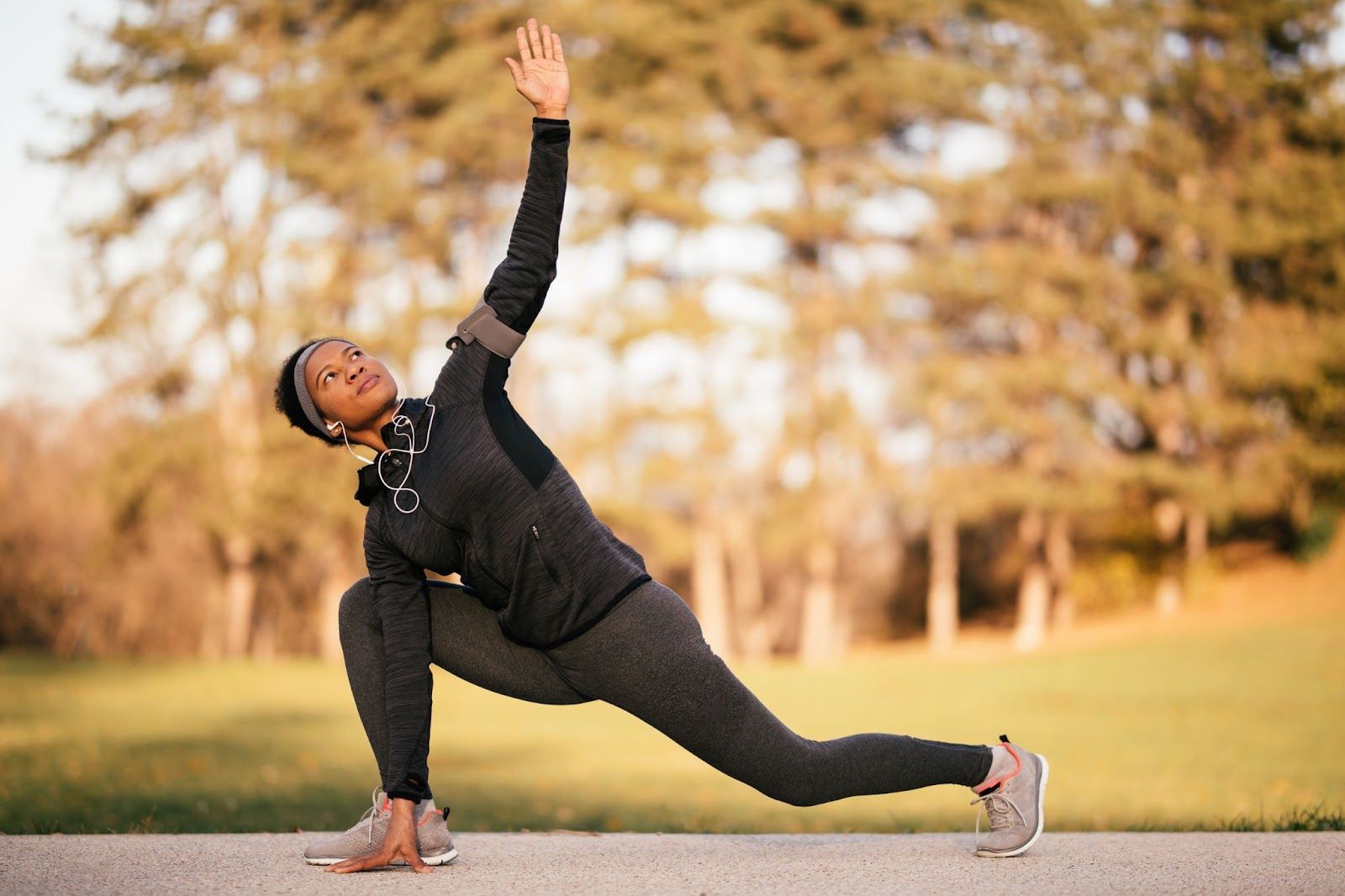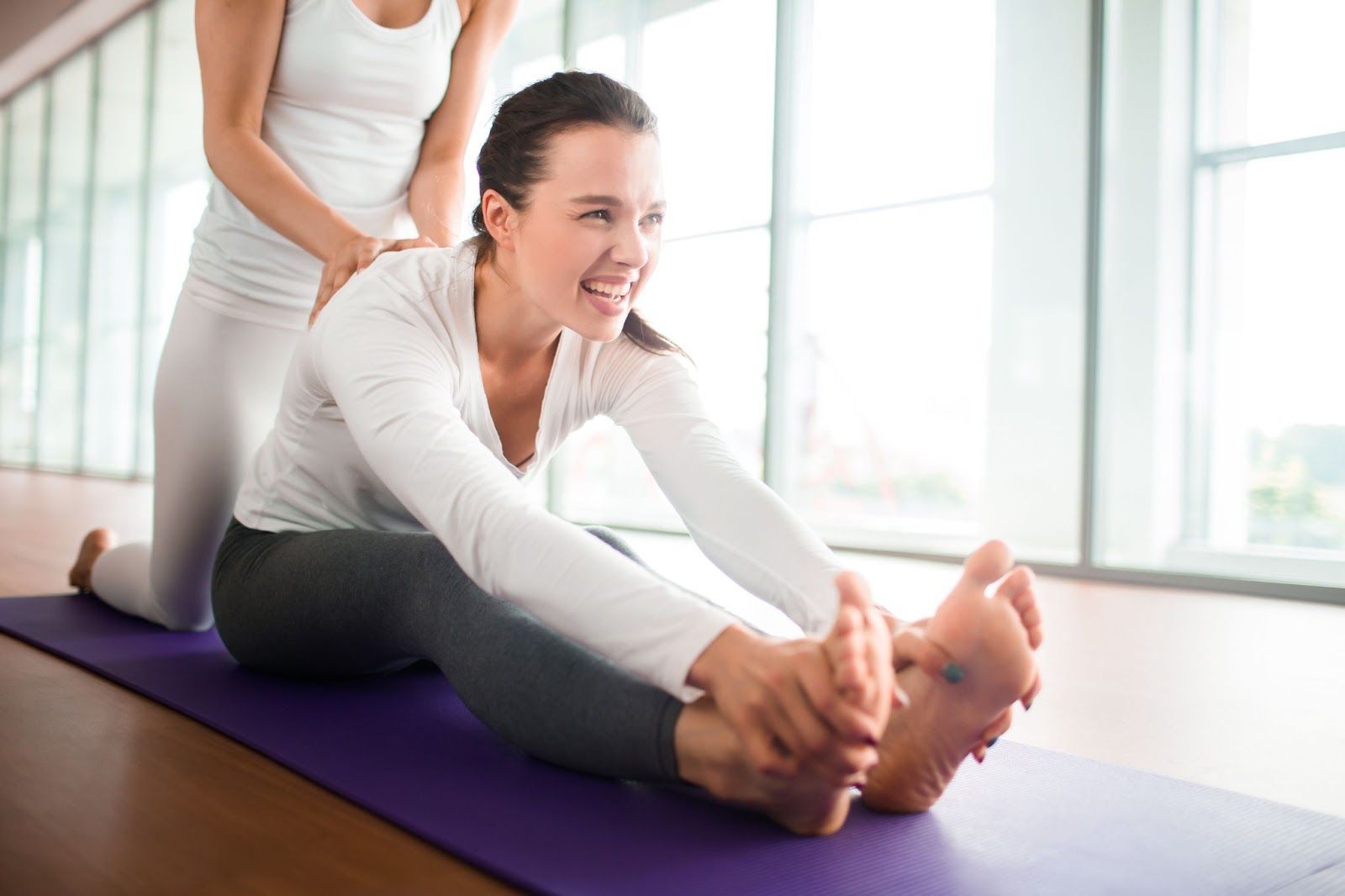10 Best Stretches for Every Muscle Group: A Comprehensive Guide
Stretching is integral to any fitness regimen, particularly for athletes and runners. It enhances flexibility, improves performance, and reduces the risk of injuries. Each muscle group benefits from specific stretches designed to increase the range of motion and promote muscular health. Stretches targeting all major muscle groups ensure a balanced stretching routine.
10 Ideal Stretches for Key Muscle Groups
Here are the ten essential stretches for all major muscle groups that can help enhance your performance.
1. Standing Quad Stretch for the Quadriceps
Stand upright and bend your right knee to pull your right foot towards your buttocks. Grab your ankle with your right hand and pull it closer to your body, ensuring your knee points downward and stays in line with your body. Hold this position for 15-30 seconds before switching to the left leg. This stretch is crucial for runners, helping to loosen the quadriceps, which are often tight due to repetitive motion.
2. Seated Forward Bend for the Hamstrings
Sit on the ground with your legs extended in front of you. Reach your arms forward and bend at the waist as far as possible while keeping your knees straight. Aim to grasp your feet with your hands, but if impossible, reach as far as your flexibility allows. Hold for 15-30 seconds. This stretch is excellent for alleviating tightness in the back of the legs, which is common in athletes who frequently run or jump.
3. Wall Calf Stretch for the Calves
Face a wall and place your hands against it at eye level. Put one foot back, keeping it flat on the floor, and bend the front knee. Ensure the back leg stays straight and the heel remains on the ground. Lean into the wall until you feel a stretch in the back leg's calf. Hold for 30 seconds, then switch legs. It helps prevent calf cramps and Achilles tendon issues, which is especially important for runners.
4. Lunge Stretch for the Hip Flexors
Step one foot forward into a lunge position, dropping your back knee to the ground. Place your hands on your front knee while pushing your hips forward. Keep your back straight and hold the stretch for 20-30 seconds. Switch sides. This stretch targets the hip flexors, which are vital for maintaining proper hip alignment and stride length in the running.
5. Pigeon Pose for the Gluteus Muscles
From a four-point position, bring one knee forward, placing it behind your wrist while extending the opposite leg straight back. Lower your hips towards the floor, keeping your back straight and balancing with your hands on either side. Hold this position for 20-30 seconds to stretch the glutes thoroughly, which is crucial for stabilizing the pelvis and supporting the lower back.
6. Child's Pose for the Lower Back
Kneel on the floor, touching your big toes together while sitting on your heels. Bend forward, extending your arms before you and resting your forehead on the ground. This relaxing stretch eases tension in the lower back and is an excellent recovery pose for after intense physical activity.

7. Cross-Body Shoulder Stretch for the Shoulders
Bring one arm across your body at about chest height and hold it with the opposite hand. Pull the arm closer to your chest until you feel a stretch in your shoulder. Hold for 15-30 seconds, then switch arms. This stretch benefits athletes in sports requiring arm movements, such as tennis or baseball.
8. Doorway Stretch for the Chest
Stand in a doorway and raise your arm at a 90-degree angle, placing your forearm against the door frame. Step through the doorway until you feel a stretch in your chest. Hold this position for 20-30 seconds, then switch arms. This is particularly effective for opening the chest, which often becomes tight from activities like cycling or desk work.
9. Standing Side Bend for the Obliques
Stand with your feet shoulder-width apart and your hands on your hips. Slowly bend to one side, sliding one hand down your thigh while keeping your torso facing forward. Hold for 15-20 seconds before bending to the other side. This stretch is critical for maintaining side-to-side agility and core stability.
10. Neck Tilts for the Neck Muscles
Sit or stand with your head squarely over your shoulders. Slowly tilt your head towards your shoulder, leading with your ear. Use your hand to pull your head closer if needed gently. Hold for 10-15 seconds per side. This gentle stretch can alleviate tension build-up from physical or stress-related activities.
Effective Stretching Techniques
To maximize the benefits of these stretches, maintain a consistent routine and ensure each stretch is performed correctly. Focus on breathing deeply to increase oxygen flow and promote muscle relaxation. Stretching should be pain-free. Any discomfort beyond a mild pull could indicate overstretching.
Whether warming up before a run or cooling down after a game, integrating these stretches into your training can improve performance and reduce injury risk. Adopt these practices regularly; your body will thank you for the enhanced flexibility and strength.
Benefits of Targeted Muscle Group Stretching
Targeting specific muscle groups when stretching is essential for several reasons, particularly for athletes, fitness enthusiasts, and anyone involved in physical activities. Here's why focusing on individual muscle groups during stretching exercises is important:
Enhanced Flexibility and Range of Motion
Each muscle group responds differently to exercise and stress. By targeting these groups individually, you can enhance the flexibility of each muscle, leading to a more excellent range of motion. That is particularly crucial in sports and activities that require extensive movements, such as running, swimming, or gymnastics, where optimized flexibility can significantly improve performance and fluidity of motion.
Reduced Risk of Injury
Specific stretches tailored to particular muscle groups help prepare those muscles for the strains they will face during physical activities. This preparation improves performance and minimizes the risk of strains, sprains, and other injuries. For example, stretching the hamstrings can prevent injuries common in sports involving sprinting or sudden stops.

Improved Postural Alignment and Muscle Imbalance
Focusing on individual muscle groups can correct postural imbalances that may develop over time due to lifestyle choices, such as sitting for prolonged periods or the natural dominance of one side of the body over the other. Targeted stretching can alleviate uneven muscle tightness and strengthen weaker areas, thus promoting a more balanced musculature and better posture.
Increased Blood Flow and Muscle Recovery
Stretching specific muscle groups increases blood circulation to those areas, providing fresh nutrients and oxygen while removing waste products. This enhanced blood flow can accelerate recovery after workouts, reduce muscle soreness, and decrease the time needed for muscles to heal, which is particularly important for athletes undergoing intense training schedules.
Relief from Pain and Tension
Targeted stretching helps relieve pain and tension in overused or stressed muscles. For instance, desk workers frequently experience neck and shoulder stiffness, which can be alleviated through stretches focusing on these areas. Similarly, targeting the lower back and hip flexors can help those who stand for extended periods or engage in repetitive motion.
Optimized Athletic Performance
Athletes can achieve better performance by stretching muscle groups that are crucial for their specific sport. For example, a basketball player might focus on the calves, ankles, and wrists to maintain quick foot movements and effective ball handling. Targeted stretching ensures that the muscles most needed for a particular activity are prepared and primed, improving agility, strength, and coordination.
Psychological Benefits
Stretching specific areas can also have calming effects, mainly when focusing on tight muscle groups due to stress or anxiety. It helps physically and mentally by relaxing the muscles, as stretching can be a meditative practice that helps reduce overall stress levels.
Paying close attention to each muscle group during your stretching routine can maximize these benefits, leading to a healthier, more balanced body and improved overall athletic performance. This approach ensures that each body part receives the attention it needs to function optimally in daily activities and more demanding physical endeavors.
Maximizing Benefits Through Targeted Stretching
Incorporating these targeted stretches into your daily routine is not just about enhancing athletic performance; it's also crucial for maintaining overall muscular health and preventing injuries. Each stretch outlined in this guide is specifically chosen to address the needs of different muscle groups, ensuring a balanced approach to flexibility and strength training. Regularly practicing these stretches can help athletes and runners achieve greater mobility, reduce their risk of muscle strains or other injuries, and improve their performance in various physical activities.
Consistency is vital in any fitness regimen. Dedicate time to stretch regularly, paying close attention to your body's response to each movement. Avoid pushing into painful ranges and focus instead on a gradual progression towards greater flexibility. With patience and persistence, the benefits of a well-rounded stretching routine will manifest in enhanced athletic capabilities and an overall healthier, more resilient body.
For more detailed insights on stretching and fitness, visit our
StretchX blog
today! Dive deeper into enhancing your performance and well-being.




